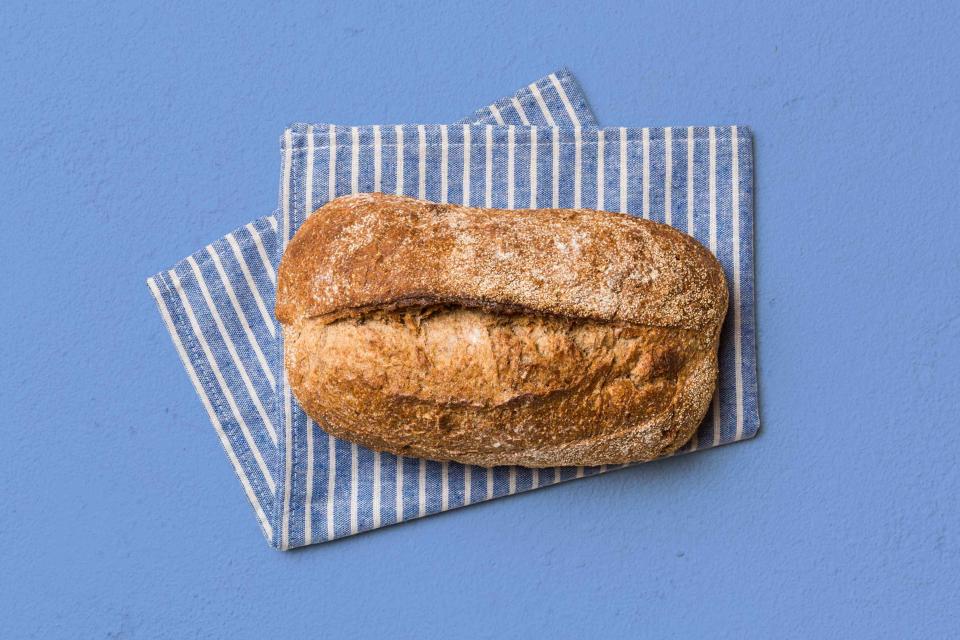Can You Freeze Sourdough Bread?
Will it stay just as delicious after a few months in the cold?

Mykola Sosiukin/Getty Images
Whether you're big into baking with your sourdough starter, or just picked up a loaf of sourdough bread from the bakery, you're probably hoping to keep it fresh for as long as possible—if you don't manage to eat the whole thing in a day or two (guilty!). So that raises the question: Can you freeze sourdough bread—or will it impact the texture and flavor of the bread? And better yet, can you freeze sourdough starter if you love to bake your own but can't keep up with feeding your yeast?
The short answer is yes to both questions—but you'll need to prep them properly to ensure perfect sourdough for your next baking project or meal.
Can You Freeze Sourdough Bread?
The good news: You can freeze sourdough bread! That's the perfect way to keep your bread fresh if you won't be able to get through a loaf in a few days. Generally, a homemade loaf can do three to five days at room temperature, before it may go stale or develop bread mold.
Related: How to Freeze (and Thaw) Food—Plus How to Keep Your Freezer Organized
Frozen sourdough bread will have the best quality if you use it within three months of popping it in the freezer, but it'll still be usable indefinitely after that.
How to Freeze Sourdough Bread
The trick to freezing sourdough bread? Keep air away from the bread's surface to avoid freezer burn. If you're freezing a freshly baked loaf, you'll want to wait until it cools completely. You can freeze a whole loaf, a half loaf, or even cut it into slices, then wrap the bread tightly in freezer-friendly products. Consider double wrapping—in plastic wrap and then foil, or placing your tightly wrapped bread in a freezer bag with all the air pushed out of it.
Related: 10 Genius Ways to Bake Better Sourdough Bread
If you are freezing individual slices, you can wrap and store them in smaller freezer bags, so you don't have to disturb the whole loaf if you need a couple of slices for toast.
How to Thaw Sourdough Bread
When you're ready to use your frozen sourdough bread, the best way to thaw it is basically, fast and hot. That means popping individual slices into the toaster or toaster oven. (Many have a specific frozen setting to do it justice.)
If you're thawing a full loaf, try putting it in a 325-degree oven for 20 to 30 minutes to get it back to fresh baked.
You can also place a frozen sourdough on the countertop to thaw—it should just take a few hours, even for a full loaf.
Can You Freeze Sourdough Starter?
If you're a baker who's gone all-in on the sourdough baking trend, you probably have a jar of starter somewhere in your kitchen. But if you aren't baking or using your sourdough regularly, it can be a little wasteful to keep feeding that wild yeast until you're ready to make some bread.
Related: 5 Tasty Ways to Use Sourdough Starter (That Aren't Bread)
Fortunately, you can chill or even freeze your sourdough starter to slow down the yeast's activity and preserve it until you're ready to bake. Sourdough starter stored in the fridge will stay in good shape for the occasional baker who might be making a loaf or two every couple of weeks. But if you need to store it longer—for instance, if you won't be baking much in the summer—the freezer is your best option.
How to Freeze Sourdough Starter
To freeze your sourdough starter, place a cup of the starter in a freezer storage bag, remove as much air as possible, and pop it into the freezer. You won't need to feed your starter again until you're ready to thaw it.
How to Thaw Sourdough Starter
You'll need to plan ahead when you're ready to start using your starter again, as you'll not only have to allow for thaw time, but you'll have to give your starter some TLC and feed it flour and water to help revive your yeast. It could take a few days for it to thaw and reset.
Start by taking your starter out of the freezer, and letting it thaw to room temperature. Then, discard half of the starter and feed it as you typically would. You may need to go through a couple of feedings before your sourdough will be ready to go.
For more Real Simple news, make sure to sign up for our newsletter!
Read the original article on Real Simple.

